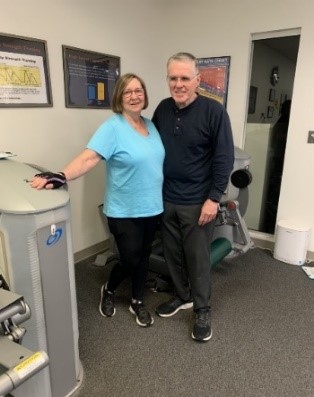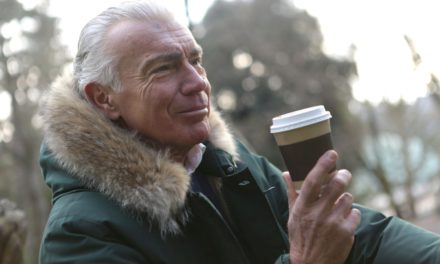By Rita La Rosa Loud, B. S.
Untrained older adults and seniors generally have an easier time starting a relatively basic resistance and aerobic exercise program if they have someone to train with. Whether you have a workout pal or not, the social support, encouragement, and motivation that a friend, spouse, partner, or a group exercise program provides can be a positive and lifechanging experience for individuals of any age. Consider the benefits derived from a standard resistance exercise and aerobic activity program that many research studies support for this population. The American College of Sports Medicine, for example, highly recommends machine-based strength/resistance training for older adult and seniors.
STRENGTH TRAINING FOR OLDER POPULATION
A basic and brief strength training program is proven effective for increasing muscle strength, improving body composition, and enhancing health and fitness parameters in older adults.
Over an eight-year period, Westcott, et. al. conducted studies of 1,644 middle-aged adults in 10 weeks of programming using 10 basic resistance machines and 25 minutes of aerobic activity on cardiovascular equipment.
Subjects performed one set of each exercise at a weight load they could lift between 8 and 12 repetitions and increased the resistance by 5% once 12 repetitions were completed. Participants stated high levels of satisfaction with their significant improvements in muscle gain, fat loss, and blood pressure reduction. Likewise, 77 golfers in this study improved their physical performance, increased club head speed for longer drives, attained lower golf scores, and had no injuries the following golf season.
Whether you have an exercise companion or not, a group machine-based strength training and aerobic fitness program that incorporates the above training protocol can be an affirmative experience, and chance for social interaction, camaraderie, and support.
Next an older couple adopting a workout buddy mindset share their story

The Barretts exercised independently before partnering. Debbie did Pilates and yoga but after rearing children and working full-time, her activity slowed down. Eleven years ago, she joined our group fitness program. Jim used the gym at work and later retired. It suited them to train together, to lose weight, build muscle, and maintain their fitness level as they aged. Jim wanted to get in shape and alleviate sciatica by strengthening his core, “I feel better. sleep better, and my sciatica is better,” he said.
Debbie wanted to reduce back pain, blood pressure/cholesterol dosages, and improve energy and mobility. Uniting helped them stick with the program. If one felt like skipping, the other pointed out their goals.
“It has become a habit. We rarely miss a session,” said Debbie. “We take walks, bike, and babysit our granddaughter together now.”
The Barretts’ advice to seniors starting out? “Just do it! It’s an investment that pays dividends toward future health. Seek guidance from qualified trainers to get full benefit, and to avoid injuring yourself.”
Wayne Westcott, Ph.D. Center for Health and Fitness, is a safe, effective, and highly supervised machine-based physical activity program for all ages including adults and seniors. Located at President’s Place, 1250 Hancock Street, Quincy, across from Quincy T Station, free 1-to-2-hour parking is available on Hancock, Coddington, and Washington Streets. Call Rita at 617.405.5978 for a tour, free session, or to learn how to enroll.
Rita La Rosa Loud holds a B.S. in Exercise Physiology with additional education in Sports Medicine and Athletic Training. Rita is NASM Certified and has been actively involved in the fitness industry for over 35 years. An author, she writes fitness-related articles for various publications, is a fitness researcher, and directs Wayne Westcott, Ph.D. Center for Health and Fitness at Quincy College. She can be reached at 617-405-5978, and is available for speaking engagements.



